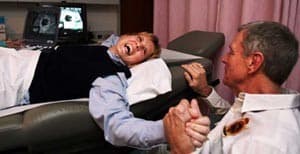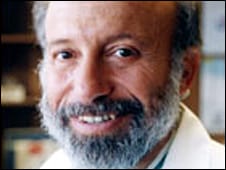Less of a baby boom: After the octuplet baby case
By Blythe Bernhard
ST. LOUIS POST-DISPATCH, March 11, 2009

Fertility doctors say a proposed law aimed at preventing multiple births wouldn’t change their practices and doesn’t go far enough to help couples struggling to have a baby.
In response to the highly publicized case of octuplets born in California, a few states, including Missouri, have looked at bills that would limit the number of embryos that could be transferred to a woman through in vitro fertilization.
The Missouri bill, sponsored by Rep. Robert Schaaf, R-St. Joseph, uses guidelines from the American Society for Reproductive Medicine based on a woman’s age and chances of carrying a pregnancy to term. Most patients would receive a maximum of two to three embryos, but doctors could implant up to five in rare cases.
Schaaf, who is also a medical doctor, said the public outrage over the California case inspired him to introduce the bill last week.
“If you implant eight embryos into a woman, you’re putting her life at risk and you’re putting the lives of the eight babies at risk, and the taxpayers are going to have the burden of paying for it,” Schaaf said. “I think it’s completely within the bounds of the state to make sure that we watch out for mothers and babies.”
The American Society for Reproductive Medicine supports the bill because it adds heft to their guidelines.
“We cannot stop somebody from practicing medicine; only the state can do that,” said society spokesman Sean Tipton. “I think this approach weds the licensing board with substantive expertise of leading experts in the country.”
Local doctors say the bill wouldn’t do much to reduce the births of triplets, quadruplets or more as a result of fertility treatments for three reasons:
- The bulk of clinics here primarily follow the society’s guidelines for in vitro fertilization already.
- Fertility drugs that stimulate the ovaries to release eggs are commonly used as a first-line treatment, giving doctors less control over multiple births.
- Missouri doesn’t require insurance companies to pay for in vitro fertilization, leading desperate couples to pressure their doctors to implant more embryos per attempt to improve their chances of getting pregnant.

“The bill isn’t really addressing the problem; it’s addressing the publicity,” said Dr. Sherman Silber, director of the Infertility Center of St. Louis at St. Luke’s Hospital. “It completely disregards the enormous need of infertile couples. I think we could provide safety as well as respond to their needs by mandating insurance coverage, making IVF the first line of treatment rather than these fertility drugs.”
Silber said he has seen couples save money for five years to pay for one round of treatment that can cost up to $15,000. If Missouri required insurance companies to pay for in vitro fertilization in certain cases, as is mandated in Illinois and several other states, it would likely lead to fewer multiple births.
“It’s very hard to push single embryo transfer when patients are paying out of pocket,” Silber said.
Silber and other doctors stress that the goal of in vitro fertilization is always the birth of one healthy baby. Multiple births, particularly triplets and more, raise the risks for the mother and babies, including prematurity, low birth weight and birth defects.
As in vitro technology has improved, the number of embryos transferred has been on the decline since the mid-1990s.
About 80 percent of in vitro cycles now involve the transfer of two or three embryos. Doctors have dramatically reduced the transfers of four or more embryos, from 62 percent of cases in 1996 to 16 percent in 2006, according to the federal Centers for Disease Control and Prevention.
As a result, multiple births following in vitro fertilization have also declined. About one-third of the births in 2006 involved two or more infants, down 20 percent over the previous 10 years. Triplets or higher occurred in 2 percent of the births.
“In most situations, physicians are practicing responsible medicine,” said Dr. Emily Jungheim, a reproductive endocrinologist with the Washington University School of Medicine. “There should be very little legislation guiding what someone does with their reproductive cycles.”
Under the guidance of Silber, Fred and Linda Christian of Belleville decided to transfer three embryos in their first try at in vitro fertilization. At the clinic on Monday, Linda Christian learned she was pregnant with twins.
Education and counseling from the doctor was key to the decision, said Christian, 39. The couple learned the odds of having triplets were low, but the chances of getting pregnant improved by transferring three embryos. Christian had very low age related deficit in ovarian reserve with very few good eggs. Thus, three embryos were transferred, which is within ASRM guidelines.
“If we didn’t know better, we might have put in 10 embryos,” she said. “Under this kind of care and diligence, we got a perfect result. We feel abundantly blessed.”
See also:


